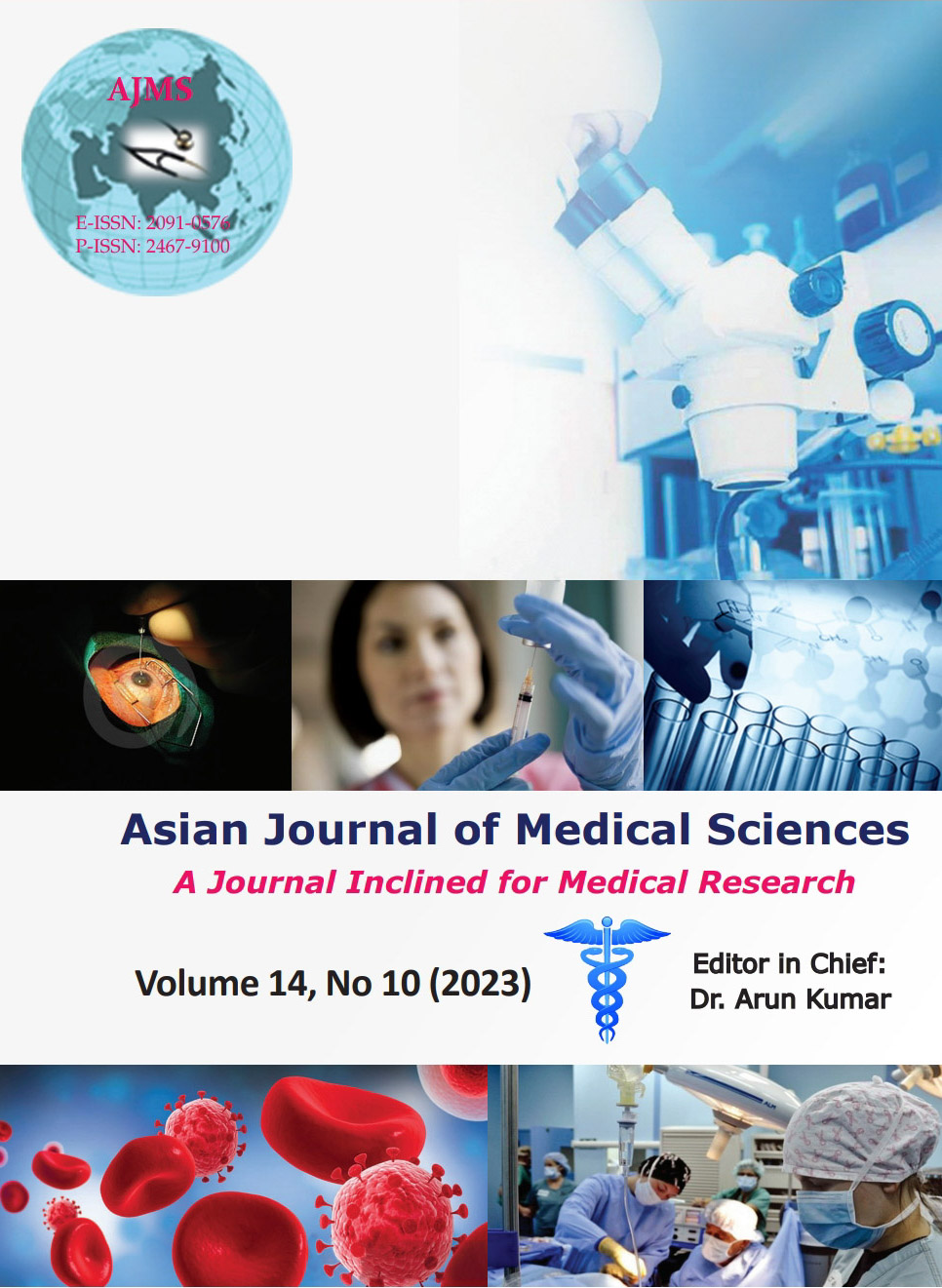Platelet count/splenic diameter ratio: Analysis of its capacity as a predictor of the existence of esophageal varices in liver cirrhosis
Keywords:
Esophageal varices; Cirrhosis; Upper gastrointestinal bleeding; Platelet count and spleen diameter ratioAbstract
Background: Endoscopic screening for esophageal varices (EV) is suggested for all cirrhotic patients. Patients with steady liver function should have a screening endoscopy every 2 years if no varices are found. In addition, a liver function test should be performed yearly for those with worsening liver function.
Aims and Objectives: The study aimed to investigate non-invasive parameters’ predictive efficacy, such as Platelet count/splenic diameter ratio (PC/SD ratio), by diagnosing EV in cirrhotic patients.
Materials and Methods: A Prospective, analytical, single-center study was conducted on 50 patients admitted to Government Rajaji Hospital, Madurai, with cirrhosis between March 2021 and August 2021. Patients with cirrhosis histories and clinical characteristics were admitted to the medical ward of Government Rajaji Hospital. The ultrasonogram (for splenic diameter) and a platelet count were performed on all 50 patients.
Results: Thirty-three of the 50 patients had EV during upper gastrointestinal endoscopy. A platelet count/splenic diameter ratio of <900 was found in 33 patients. The two remaining patients have seen a ratio of >900. Therefore, the study’s total of 33 patients had a ratio of <900. Varices were absent in 2 of them. The mean platelet count/spleen diameter ratio of patients without varices was 948.98, and with varices it was 826.9. Hence, using a ratio of 870 as a cutoff, 96% of patients with varices were detected (sensitivity: 94.12% and specificity: 93.94%).
Conclusion: This study suggests that a lower Platelet count/splenic diameter ratio (PC/SD ratio) identifies patients needing endoscopy for esophagal varices preventative therapy. Platelet count, spleen bipolar diameter, and PSR are non-invasive, cost-friendly diagnostics.
Downloads
Downloads
Published
How to Cite
Issue
Section
License
Copyright (c) 2023 Asian Journal of Medical Sciences

This work is licensed under a Creative Commons Attribution-NonCommercial 4.0 International License.
Authors who publish with this journal agree to the following terms:
- The journal holds copyright and publishes the work under a Creative Commons CC-BY-NC license that permits use, distribution and reprduction in any medium, provided the original work is properly cited and is not used for commercial purposes. The journal should be recognised as the original publisher of this work.
- Authors are able to enter into separate, additional contractual arrangements for the non-exclusive distribution of the journal's published version of the work (e.g., post it to an institutional repository or publish it in a book), with an acknowledgement of its initial publication in this journal.
- Authors are permitted and encouraged to post their work online (e.g., in institutional repositories or on their website) prior to and during the submission process, as it can lead to productive exchanges, as well as earlier and greater citation of published work (See The Effect of Open Access).




